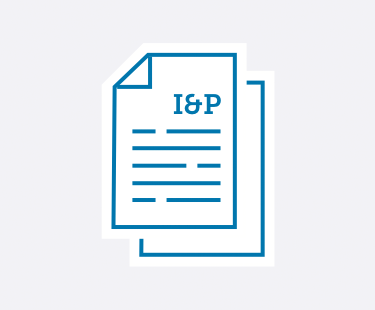

Learn practical strategies to handle emerging trends and leadership challenges in private schools.
No matter if you’re a School Head, Admission Director, Development Director, Board member, or any other private school administrator—Ideas & Perspectives®, ISM’s premier private school publication, has strategic solutions for the pervasive problems you face.
- Tuition not keeping pace with your expenses? In I&P, explore how to use strategic financial planning to create your budget and appropriately adjust your tuition.
- Enrollment dropping off? Discover how to implement the right admission and enrollment management strategies that engage your community—and fill your classrooms.
- Trouble retaining teachers? Learn how you can best support your teachers using ISM’s Comprehensive Faculty Development framework. Your faculty members will become more enthusiastic about their roles—which ultimately improves student outcomes.
- Fundraising campaigns not as successful as you’d hoped? Implement ISM’s practical advice and guidance to build a thriving annual fund, construct an effective capital campaign, and secure major donors—no matter your community size or location.
- Not sure how to provide professional development—for you and your staff? Learn ways to develop and fund a successful professional development strategy. You can improve teacher-centered satisfaction and growth, which in turn strengthens student-centered learning.
- Problematic schedule? You can master the challenges of scheduling with the help of ISM’s practical advice, based on our experience with hundreds of schools and our time-tested theories.
- And so much more.
I&P has shared targeted research, up-to-date insight, and sound theory with school leaders since 1975. More than 8,500 private school decision-makers find the answers to their schools’ administrative and governance matters in our advisory letter. We give you the strategic answers you need.
As an ISM Silver or Gold member, you not only receive issues online and in print 10 times a year, but you have access to 900+ articles in our web archive. Need help? It’s at your fingertips! Learn more and sign up for ISM's membership here.
Search
See the articles from our latest issue of Ideas & Perspectives.
School Head Evaluation: Essential Expectations
Volume 41 No. 13 // October 17, 2016
ISM’s long-standing recommendation is that the Board President annually form a Head Support and Evaluation Committee (HSEC) to work with the School Head to: create a list of major School Head goals at the start of each year; identify or develop an array of data bearing on each goal; support the Head throughout the year in analyzing the data and introducing, as needed, midcourse corrections; and produce at year-end a summary/critique pertinent to each goal for presentation to the Board President.
1. Already a member? Click here to login.
2. Not a member? Click here to become a member.
3. Not sure? We'll help you figure it out.
The Committee on Trustees Calendar
Volume 41 No. 13 // October 17, 2016
By accepting the role of Chair of your Board’s Committee on Trustees (COT), you have accepted leadership of a committee that ISM regards as one of the Board’s most critical for the strategic success of the school you serve: that is, success as a viable and sustainable institution for the long term. Aside from your everyday, year-round task of providing as-needed assistance to the Board President—partnering with her or him to insure the smooth, strategically focused operations of the Board—you will find there is a predictable cycle of tasks the COT can expect to undertake in most years. (“Most years” refers to the fact that Boards occasionally face tasks of such magnitude that a standard Board calendar cannot realistically be followed, such as a year in which the search for a new School Head is conducted.)
1. Already a member? Click here to login.
2. Not a member? Click here to become a member.
3. Not sure? We'll help you figure it out.
Refocus Your Board Agenda and Your Board Minutes
Volume 41 No. 12 // September 23, 2016
There is a close relationship between the quality of your Board-meeting agenda and your Board meeting minutes. If one of those is done in a perfunctory or unfocused manner, so, often, is the other. Frequently the Board meeting agenda is, in fact, merely a generic meeting outline that is retained for meeting after meeting with little attention given to it from one session to the next. That being the case, the meetings themselves may become formless discussions of whatever topics come to mind, a meandering process that will sometimes be reflected in formless, meandering Board meeting minutes.
1. Already a member? Click here to login.
2. Not a member? Click here to become a member.
3. Not sure? We'll help you figure it out.
A Renewed Perspective for Professional Development
Volume 41 No. 12 // September 23, 2016
What should professional development be today? A decade ago, we published an article, “The Changing Paradigm for Professional Development,” that contrasted the descending paradigm of teacher-centered satisfaction with the ascending paradigm of student-centered learning. While the broad strokes of teaching improvement have been laid out many times, re-evaluate this in the light of increasing competition in the marketplace and because the context of professional development (PD) has changed as part of the broader education revolution.
1. Already a member? Click here to login.
2. Not a member? Click here to become a member.
3. Not sure? We'll help you figure it out.
In Their Own Words: What Students Want
Volume 41 No. 12 // September 23, 2016
ISM’s long-standing contention has been that schools have two primary markets: parents and students. Over time, we have seen an increase in the influence students have on enrollment decisions. From ISM surveys representing nearly 1,000 parents, 11% of respondents indicated that their children had significant to total influence, and 28% said that their children had equal influence. As one would expect, the level of influence increases with each grade, particularly beginning in the sixth grade. But even kindergartners are reported to have significant influence for some parents. To remain sustainable, a school must appeal to both parents and students from the admission process through graduation.
1. Already a member? Click here to login.
2. Not a member? Click here to become a member.
3. Not sure? We'll help you figure it out.
Lines of Authority and Your Operating Budget
Volume 41 No. 11 // September 6, 2016
Once the Board passes the annual budget, in conformity with the strategic financial plan numbers on Line 6 (hard income profit and loss)and Line 7 (the percent of operating expense covered by total hard income), the Head controls Line 5 (operating expense). He or she determines the best ways to spend those funds. Typical Line 5 headings include compensation, instructional expenses, advancement, technology, administration, operations and maintenance, and athletics and student services. Discussion of these lines is never a Board agenda item. They are undoubtedly part of the conversation for the Finance Committee where the details of the budget are hashed out. But, even then, the conversation is far more about the realism behind numbers (e.g., the inevitable increase in health costs or increase in faculty compensation) than it is about whether this or that should be done. That is an operations responsibility.
1. Already a member? Click here to login.
2. Not a member? Click here to become a member.
3. Not sure? We'll help you figure it out.
The Rhetoric of Rigor II: Stress, Schedules, and Fun
Volume 41 No. 11 // September 6, 2016
In a previous article, “The Rhetoric of Rigor,” we argued that schools should abandon the use of the word “rigor” in their marketing messages because of its ubiquity and ill-defined nature. We encountered then—and continue to encounter—schools that adhere to educational practices they know need change (e.g., AP program, homework policies). But they fear those changes because those practices were once provided as evidence of academic rigor. Fear stands as a barrier to change as schools often see “academic rigor” as their competitive advantage.
1. Already a member? Click here to login.
2. Not a member? Click here to become a member.
3. Not sure? We'll help you figure it out.
Appropriate Tuition Adjustment: Recasting Financial Figures, 2016–17
Volume 41 No. 11 // September 6, 2016
Each fall, ISM publishes a set of conversion factors to facilitate recasting previous tuitions into current dollars. (See the accompanying table.) We continue to use the Urban Consumer Price Index (CPI-U). However, we also realize the CPI-U does not reflect expenses in private-independent schools; it can only serve as a base figure. There are compelling arguments for adjusting your tuition at a rate 2% above the overall inflation rate.1
1. Already a member? Click here to login.
2. Not a member? Click here to become a member.
3. Not sure? We'll help you figure it out.
Nine Characteristics of the Responsible Trustee
Volume 41 No. 10 // August 8, 2016
As Chair of the Committee on Trustees (COT), you will want your committee to rewrite your Board Profile at least as often as your Board creates a fresh strategic plan/strategic financial plan. (ISM recommends a three- or four-year cycle for this.) You profile your Board to execute your strategic plan/strategic financial plan with the greatest distinction. While the Board Profile focuses foremost on those individual characteristics most obviously related to your planning document—e.g., nonprofit marketing expert or land developer—a general set of behaviors and attitudes, each of which can be placed under the general heading of “due diligence,” should undergird any Board Profile and be prominently listed in a special section of your profile document.
1. Already a member? Click here to login.
2. Not a member? Click here to become a member.
3. Not sure? We'll help you figure it out.
The Faculty Experience Survey and Matrix: An Update
Volume 41 No. 10 // August 8, 2016
In two previous Ideas & Perspectives articles, ISM introduced the “ISM School Culture Matrix” concept and scoring instrument. Schools use our Faculty Experience Survey to measure their teachers’ attitude and opinions regarding the level of predictability and support they experience from their administrators. This article updates readers on our current conceptualization, scoring, and practice using the instrument. First, we replaced the words “School Culture” with “Faculty Experience” in the survey and matrix. This more accurately reflects the focus of the instrument—to measure the faculty’s experience of predictability and support from their administrators and describe, collectively, the resulting likely organizational characteristics.
1. Already a member? Click here to login.
2. Not a member? Click here to become a member.
3. Not sure? We'll help you figure it out.


